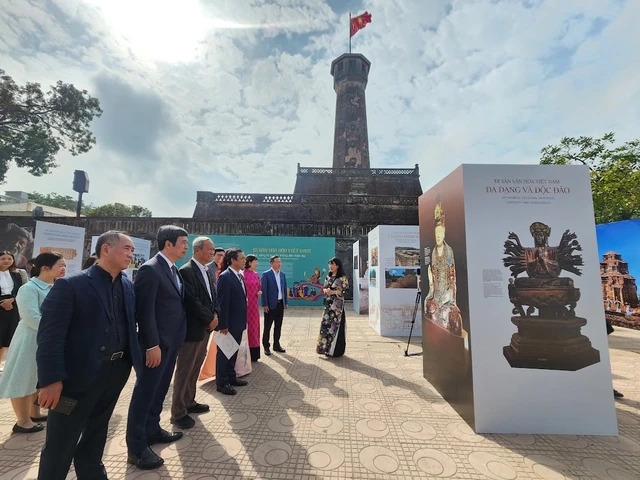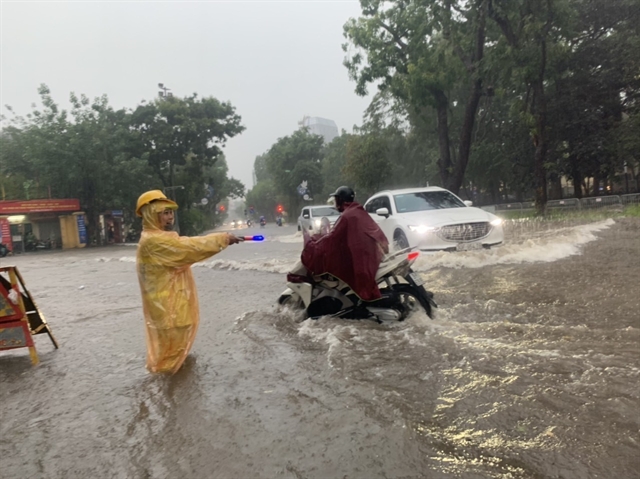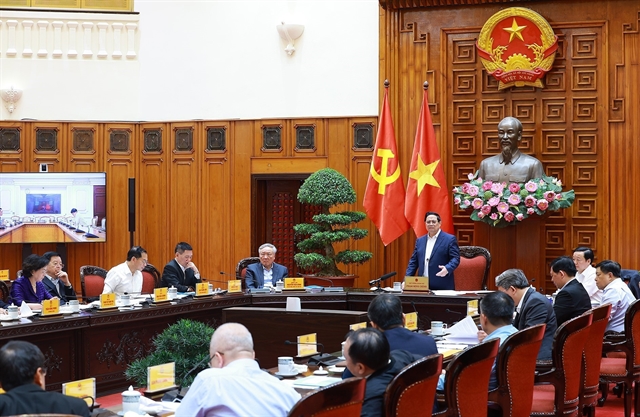 Opinion
Opinion

Minister of Natural Resources and Environment Trần Hồng Hà talked to the press on the sidelines of the National Assembly meeting about solutions to prevent flooding in urban areas

|
| Heavy rain flooded many streets in Hà Nội on May 29. — VNA/VNS Photo |
The Minister of Natural Resources and Environment Trần Hồng Hà talked to the press on the sidelines of the National Assembly meeting about solutions to prevent flooding in urban areas
Most of the buildings in the big cities of Việt Nam are high-rises. Is this why Hà Nội turns into a river after heavy rain?
It is not clear that there is a connection between the system of high-rise buildings and floods in cities. However, it has a certain impact.
The drainage infrastructure must be built to store both the amount of water used by people and the amount of rainwater in the context of severe weather conditions.
It means that it is necessary to consider synchronicity between infrastructure, the total population and the amount of water, including wastewater and rainwater.
Does limited forecast capacity make it hard to assess all flooding risks in cities in case of bad weather?
The forecast refers to rainfall per unit of time and calculates the amount of rain per square metre. It is not easy to make a correct forecast during a short period.
We need to solve the problem of the model and capacity of the water drainage system.
Do you think that Hà Nội should develop a flood prevention plan like HCM City?
Initially, Hà Nội needs to enhance the forecast task. The capital city also needs a master plan to evaluate and put forth data relating to extreme weather like the historical downpours with such a huge amount of water seen over the past few days.
It is also essential for the city to conduct careful research when designing urban areas for smart urban areas resistant to extreme weather.
Using pumps to drain water in case of a flood is just a preparatory plan. When building urban areas, it must take into consideration the capacity of the water drainage system to ensure sustainability in cases of extreme weather.
Therefore, it needs a master plan based on forecast and planning to have an infrastructure system capable of coping with and adapting to extreme weather.
Technical solutions are also needed.
Could you talk more specifically about building sustainable smart urban areas in adaptation to climate change?
It is necessary to review all the infrastructure systems of urban areas, forecast the extremity of weather and build a synchronous system to collect and drain rainwater and treat wastewater.
Designs must calculate the height of different regions and have an area designated for naturally draining water and areas using equipment and devices like pumps to drain water.
In more extreme weather, it requires a system to store water. Japan, for example, builds a massive underground reservoir for flood control. It helps to drain water from flooding residential areas while storing water for crops in case of drought.
Or we can make use of schools, stadiums and fields to store water temporarily to prevent flooding in important areas.
We can even build water storage systems under roads. Many countries have done that, although it is expensive.
The most important thing is the vision, design and investment in infrastructure, which must be carried out synchronously. — VNS




